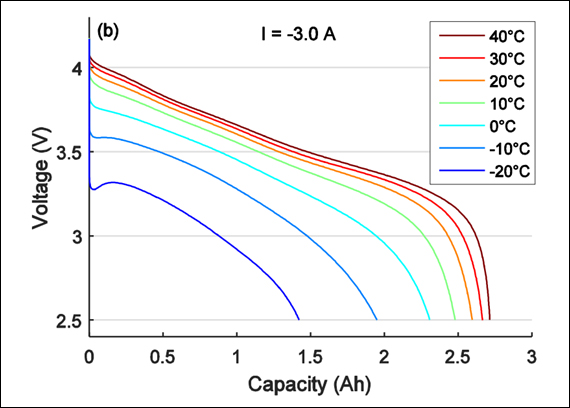Time until full charge isnt really a relevant metric for utility storage, you want larger storage, which would increase full charge time. Rate of charge is what matters.
210 Ah cells to 90% in 12 minutes.
Assuming I can math early on a Monday morning:
90% of 210 is 189
189 / 12 is 15.75
So they charge at 15.75 an Ah per minute. Not sure how that compares honestly.
The C rating is generally what battery charging (and discharging) is measured in. C being the capacity of the pack. So if the pack is 10 Ah and it takes 10 hours to charge it's 1c, if it takes 1 hour to charge then it's 10c.
I found this high current battery pack that's rated for 30c. https://www.lipobattery.us/high-discharge-lithium-ion-battery-30c-2/
I don't feel like doing the math for this battery pack.
The C rating is for discharging only.
The C rating can absolutely still be used when talking about recharging, it's just usually less relevant.
No. The C rating is a cell's maximum discharge rate without damaging the cell.
You absolutely can't charge that 30C battery at 30A
Batteries have separate C ratings for charge and discharge.
You are not completely right. 1 C means it can (theoretically) be charged in 1h. Regardless of the capacity.
10 C means it can be charged in 1/10th of an hour.
To get the maximum current, multiply the capacity by the C rating.
So like 4-5c roughly if the 90-100% charge rate is similar to the 0-90%. Way lower than some of the lithium cells I've seen at 30+c
They're brand new and the writer needs a number to look impressive.
but that catched my attention for EVs.
And last decades
I'm curious what the temperature resiliency is for sodium-ion batteries. I had a power outage recently where I was relying on a lithium-ion battery. As the temperature in the house plunged, it because so inefficient that charging a single phone overnight drained a quarter of the battery.

Source: https://batteryuniversity.com/article/bu-502-discharging-at-high-and-low-temperatures
I don't have any data on sodium-ion.
It was slightly above freezing in the house, so definitely not operating at peak efficiency. From a brief search, it looks like sodium-ion does have a similar temperature sensitivity, though it may be to a different degree.
If I'm not mistaken sodium ion is better with temperature and durability. The biggest problem is energy density, so they can't compete in any applications where size and weight matter. This leads to their 2nd biggest problem, which is that there's so much production infrastructure for lithium that no one wants to invest in new assemblies for other battery chemistries
If I'm not mistaken, those portable power stations with AC inverters consume power even when not in use. You probably should use the DC output wherever possible.
It has outputs through USB-A, USB-C, AC, and DC-vehicle (whatever it's called). I think the AC inverter was off, though I had been using it earlier. I was definitely charging fully through the USB-C output. Good point, though.
They're meant to have a much wider temperature range than Li-ion, theoretically.
What size? That sounds like a little 2000mah power bank.
That's the thing, it wasn't. It's an Ecoflow Delta Power Station, We tested boiling 1.5 liters of water off it and it used 15% of the capacity. Meanwhile, charging the phone overnight drained 30%.
That doesn't seem normal. Did you like use the phone all night otherwise it should charge up quickly and then not use any noticeable energy.
You would think, but we went directly to bed with as many blankets and coats as we could find. Just plug it in and let it charge. The phone has a maximum power draw of maybe 20W when speed charging. Not exactly boiling water.
I need to do some more formal testing, but I've found the discharge rate of my ecoflow to be baffling compared to my Jackery or a big Bluetti I have. My experience has been similar to yours.
Which has surprised me because in general I've only heard good things about them.
Did you find it was connected to temperature or other drop offs in capacity?
Wonder if there's a trade off with the faster charging, or if it's just a side effect of the grid power setup.
How many decades do they last before needing replacement?
They're meant to survive an order of magnitude more cycles than Li-ion. But I'm containing my enthusiasm until we see them lasting a long time in real life use.
Lithium isn't used for grid batteries because weight doesn't matter. Grid batteries with lead acid last 3 decades. Does this one last longer?
I have read encouraging numbers about charge cycles for sodium batteries, I'm quite curious too about real values.
Technology
This is the official technology community of Lemmy.ml for all news related to creation and use of technology, and to facilitate civil, meaningful discussion around it.
Ask in DM before posting product reviews or ads. All such posts otherwise are subject to removal.
Rules:
1: All Lemmy rules apply
2: Do not post low effort posts
3: NEVER post naziped*gore stuff
4: Always post article URLs or their archived version URLs as sources, NOT screenshots. Help the blind users.
5: personal rants of Big Tech CEOs like Elon Musk are unwelcome (does not include posts about their companies affecting wide range of people)
6: no advertisement posts unless verified as legitimate and non-exploitative/non-consumerist
7: crypto related posts, unless essential, are disallowed